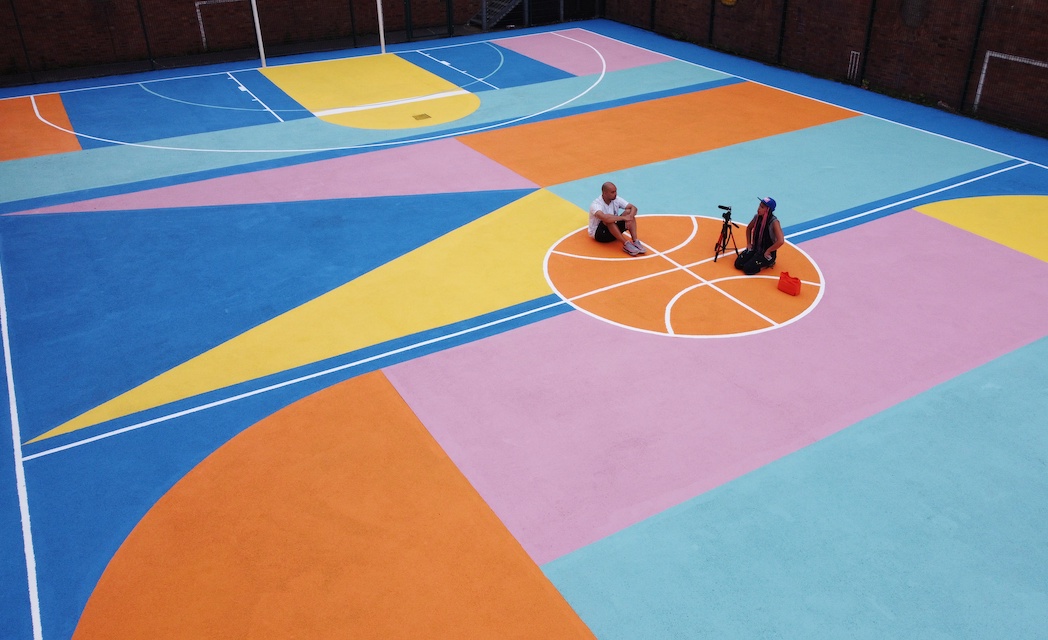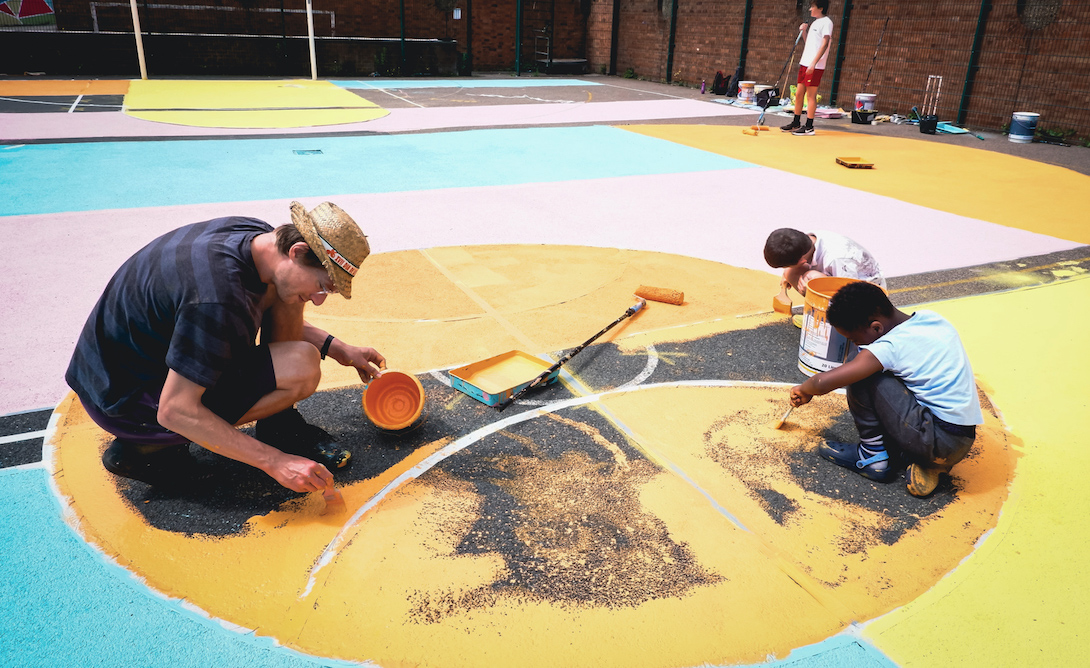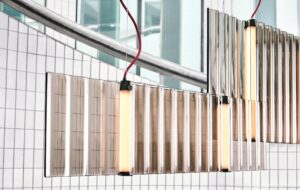Home Court aims to create a positive multi-generational space in its Camberwell community

Words by Shawn Adams
At the heart of the D’Eynsford housing estate in Camberwell, south London, a vibrant patchwork of colourful geometric shapes has transformed a tired basketball court back into an energetic social hub. Spelling out the word ‘home’, the eye-catching installation was designed during the pandemic by architect Mark Warren in collaboration with both estate residents and muralist LeSpleen.
Reworking basketball courts with colourful paint may be somewhat of a trend right now, but Home Court is one of the projects specifically focused on community engagement and support. Funded by the London Community Response Fund, UCL’s Beacon Bursary and a series of donations, the colourful mural aimed to uplift the exhausted community play space during a time when many felt disconnected. The project was supported by the D’Eynsford Tenant Management Organisation and produced by resident Thomas Morgan Evans.
Having received funding to paint the basketball court, Morgan Evans contacted Warren after seeing the London-based designer’s street art. ‘For me, an avid basketball player and artist, this was a dream project – working directly with two of my passions while making positive changes in the community,’ says Warren.

Through a series of socially distanced workshops, Warren helped co-design a colourful graphic that acts as a visual facelift for the basketball court. ‘Home Court was about getting residents involved in the process,’ he explains. Bucking the problematic format of external organisations completing the work then leaving, the project instead aimed to create stories and memories for the residents that participated in the process.
‘We purposely wanted to deliver the artwork like this, so that local people contributed to the final piece,’ says Warren, adding that the installation was designed by ‘1000 conversations and painted by 1000 hands.’ Painting the mural provided an opportunity for young people to interact with older members of the estate and form new relationships.

The five-colour design that reads ‘home’ creates visual intrigue as you walk around the estate. ‘One of the key drivers of writing a large word was a conversation we had with a resident about seeing this project from space,’ explains Warren. ‘Home has multiple meanings. It is a play on the sporting term of having a home court, but this space is also home for many.’ Used by residents, roller skaters, and a female football team called the Sunflowers, the court provides a well-needed zone of interaction for multiple user groups and is a key piece of community infrastructure.
Home Court has reenergised a vital public asset, helped strengthen local community relations, and inspired residents to think more creatively about the spaces they occupy. ‘There is power in residents actively transforming their neighbourhood and contributing to positive physical changes,’ says Warren.
Get a curated collection of architecture and design news like this in your inbox by signing up to our ICON Weekly newsletter
















